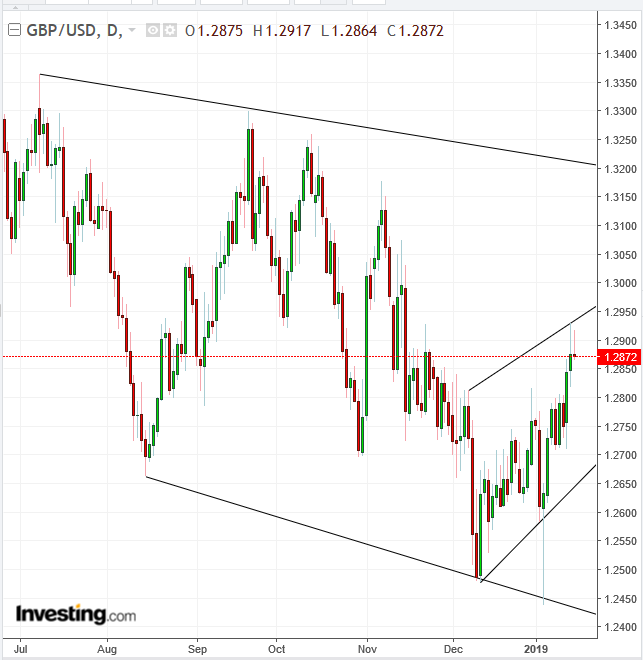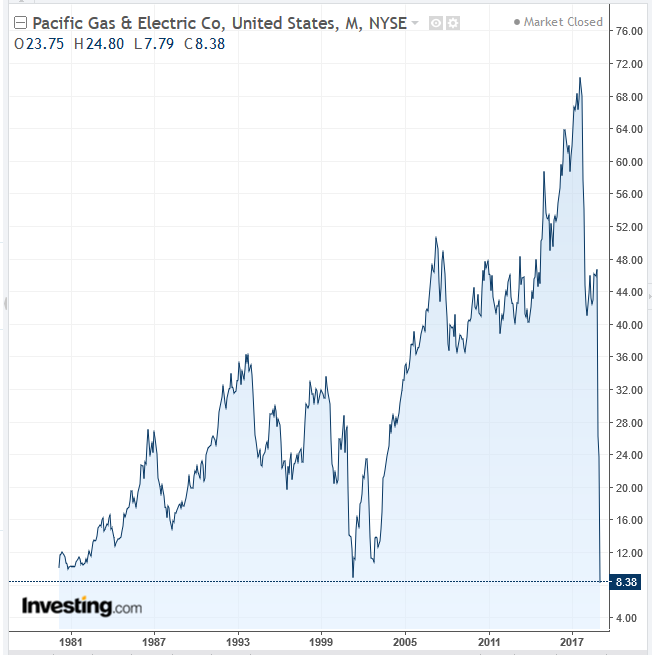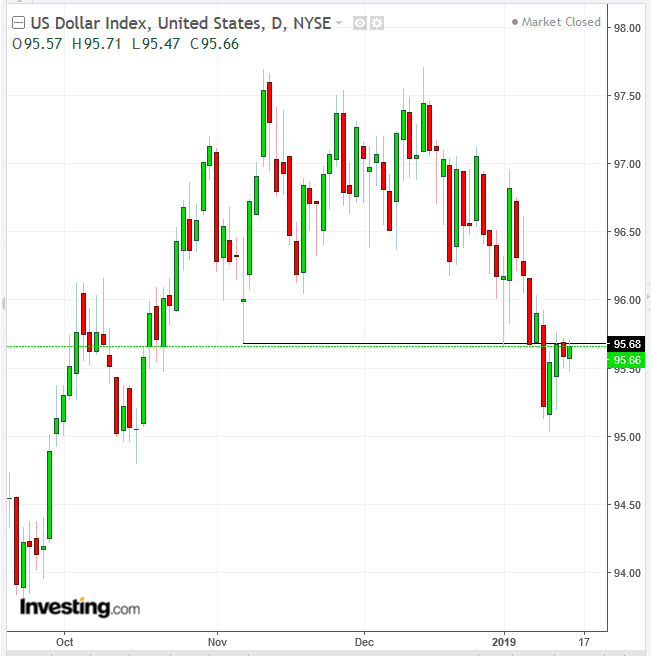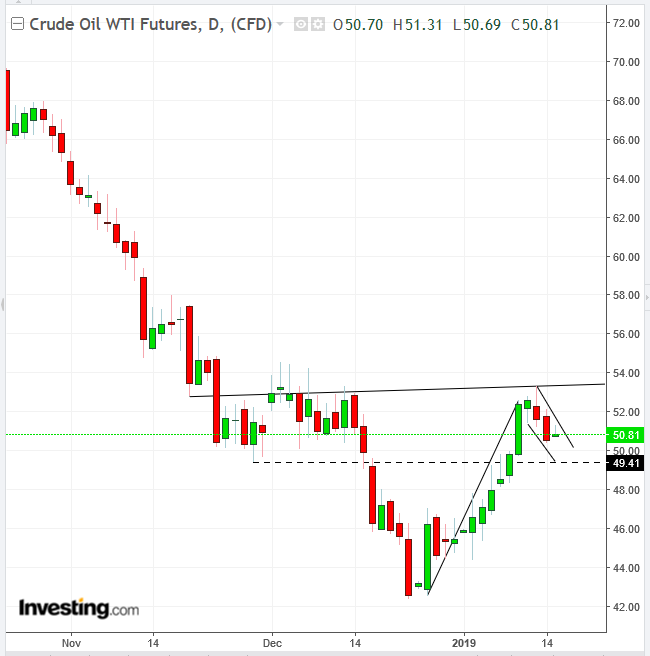- U.S. futures, global stocks leap after Beijing announces tax cuts to boost economy
- Pound remains under pressure ahead of decisive Brexit vote
- California's PG&E crashes to all-time-low on bankruptcy prospects
- Dollar retests Monday's highs; WTI rebounds
Key Events
Global equities rebounded, and futures on the S&P 500, Dow and NASDAQ 100 leaped on Chinese plans for tax cuts that will rein in an economic slowdown and counter the effect of the ongoing trade spat with the U.S.
The STOXX 600 advanced for a fifth day out of six, taking a cue from broad Asian gains, helped by Japanese investors, who enjoyed a smooth post-holiday start after bypassing yesterday's global selloff on China's trade data weakness.

In the UK, the pound sterling gave up earlier gains and edged lower ahead of a crucial Brexit parliamentary vote, where the defeat of Prime Minister Theresa May's proposed deal is all but a foregone conclusion. May is said to be risking the worst defeat in 95 years, in a vote at the House of Commons that could have long-lasting economic, political and social ramifications for the country. According to Bloomberg, at this stage it is not so much a matter of whether she'll be defeated but rather to what extent she will. A "better-than-expected" failure could therefore boost the pound and the FTSE 100.
Technically, cable has been struggling against the resistance line of a short-term rising channel since December, adding to the resistance of a long-term falling channel since August.
During the earlier Asian session, Hong Kong’s Hang Seng (+2.02%) and China's Shanghai Composite (+1.36%) outperformed among the region's major indices on hopes that government stimulus will help the Chinese economy reverse its downward trajectory.
Meanwhile, the U.S.-China trade saga took an unexpected turn on Monday when CNBC's Mad Money host Jim Cramer reported that tech executives support President Donald Trump's hard line on trade tariffs. Will this news prop up technology prices? Probably not in a visible way right now, but it may add to the overall weight of other positive news, such as China’s promise for further easing. One thing we can’t help but wonder is whether Cramer’s words will prompt Trump to once again step up his hardline and thereby derail the current talks.
Global Financial Affairs
In the U.S. session, equities sold off after disappointing China trade data exacerbated global growth concerns. The S&P 500 fell for a second day, down 0.53 percent. It was the benchmark’s third decline in January and the fourth since the post-Christmas rally.
With the exception of Financials (+0.69%), which benefited from Citigroup saying the trading environment was starting to improve, all sectors closed in negative territory. Utilities (-2.25%) was the clear laggard. The sector was disproportionately sold off after PG&E (NYSE:PCG), the country's largest utility firm, announced it would file for bankruptcy, as it faces liabilities of up to $30 billion for California’s wildfires, which claimed 86 lives and destroyed 21,000 homes, including 90 percent of homes and businesses in the town of Paradise.

PG&E shares lost more than half their value, sinking 52.35 percent and closing at $8.38, an all-time low. However, the stock provides an exceptional opportunity for serious risk takers.
California Governor Gavin Newsom said that he was discussing the possibility of helping the beleaguered company stay solvent. When the president of California’s Public Utilities Commission, Michael Picker, said in November that he couldn’t imagine allowing the utility to go bankrupt—as it services 16 million customers in the state—the statement alone caused an instant 35 percent rebound in the stock price.
Healthcare (-1.1%) was the second-worst performer after an oversight committee urged drugmakers to explain their pricing policies.
The Dow Jones Industrial Average dropped 0.36 percent, the Russell 2000 slid 0.92 percent and the NASDAQ Composite declined 0.94 percent.

The dollar is retesting highs made yesterday and Friday. This is the third day that it fails to cross the 96.00 mark—the lowest trading level of the consolidation since November, which we argued is a top.

Crude rebounded from a two-day loss, increasing the outlook for the development of a falling flag, bullish in an uptrend. Also, the completion of the small continuation pattern would likely complete an extensive H&S bottom, which will have started to develop since November. However, should prices close below $49.40, the low of the potential right shoulder of the H&S bottom (dotted line) would decrease that outlook. Some analysts posit that the recent instability of oil prices could be the new normal for the commodity.
Up Ahead
Earnings
- JPMorgan (NYSE:JPM) is expected to release earnings before market open today, with a $2.22 EPS forecast, compared with $1.76 for the same quarter last year.
- Wells Fargo (NYSE:WFC), due to release results before market open, whose EPS is expected to show $1.17, from $0.97 EPS last year.
- Bank of America (NYSE:BAC), scheduled to post corporate results today before market open, with an EPS forecast of $0.63, up from last year’s $0.47 for the same quarter.
- Morgan Stanley (NYSE:MS), due to post earnings Thursday before market open. EPS is seen at $0.90, after posting $0.84 for the corresponding quarter last year.
- Goldman Sachs (NYSE:GS) is due to report Wednesday before market open an EPS of $5.5, slightly lower than the same quarter last year, when it posted $5.68
- Alcoa (NYSE:AA) will announce earnings Wednesday after market close, with an expected $0.44 EPS, from last year's corresponding quarter of $1.04
- Netflix (NASDAQ:NFLX), expected to report earnings Thursday after market close, with a $0.25 EPS, lower than the $0.41 posted for the same quarter last year.
- American Express (NYSE:AXP) is scheduled to release results Thursday after market close, showing a $1.79 EPS, to follow the $1.58 of the same quarter last year.
- BlackRock (NYSE:BLK) is scheduled to report corporate earnings Wednesday before market open, with a $6.53 EPS, slightly higher than the $6.24 posted for the same quarter last year.
Market Moves
Stocks
- Futures on the S&P 500 climbed 0.6 percent, to the highest in more than a month on the most significant gain in a week.
- The STOXX 600 advanced 0.8 percent to the highest in almost six weeks on the biggest gain in a week.
- The UK's FTSE 100 gained 0.7 percent, the most significant gain in a week.
- Germany’s DAX climbed 1 percent to the highest in almost six weeks on the biggest increase in more than a week.
- The MSCI Asia Pacific Index edged 1 percent higher to the highest in almost six weeks.
- The MSCI Emerging Market Index advanced 1.1 percent to the highest in six weeks.
Currencies
- The Dollar Index climbed 0.11 percent to 95.69.
- The euro advanced less than 0.05 percent to $1.147.
- The British pound gained 0.1 percent to $1.2883, the strongest in two months.
- The Japanese yen dropped 0.5 percent to 108.67 per dollar, the weakest in a week on the most significant dip in more than a week.
Bonds
- The yield on 10-year Treasurys increased one basis point to 2.71 percent.
- Germany’s 10-year yield fell less than one basis point to 0.23 percent, the lowest in a week.
- Britain’s 10-year yield gained one basis point to 1.305 percent, the highest in almost three weeks.
- The spread of Italy’s 10-year bonds over Germany’s fell less than one basis point to 2.6091 percentage points.
Commodities
- West Texas Intermediate crude gained 1.4 percent to $51.20 a barrel.
- Gold slipped 0.2 percent to $1,288.53 an ounce.
